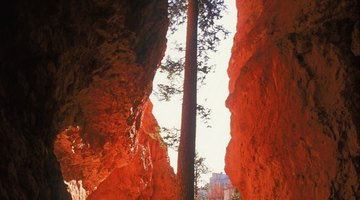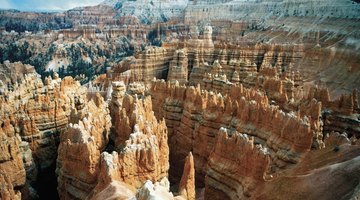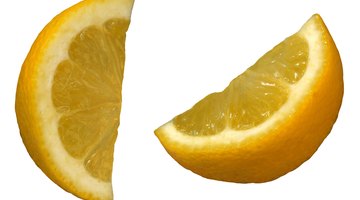Pros & Cons of Limestone for Walls
Limestone, a sedimentary rock, is made of sand or calcium carbonate particles compacted gradually over thousands of years. The material has a layered nature and its purified form is a source of calcium in cereals and bread. It is also used extensively in cosmetics and medicines.

Limestone is a popular building material and used for walls in several outdoor and indoor applications. Some walls are built almost entirely of limestone blocks, while others are only embellished with an external limestone veneer.
Pro: Durable, Weather Resistant and Easy to Clean

Great Pyramids of Giza in Egypt, Taj Mahal in India, Chartres Cathedral in France and St. Paul’s Cathedral in London -- each dating thousands of years -- have limestone in common. All of these historic structures were built of limestone, and the fact that each remains standing today goes to show the durability of limestone as a building material. Limestone is weather resistant, fireproof, bug-resistant and impact-resistant and will go on looking as good as new even generations down the line. Furthermore, limestone walls are easy to clean and require only a gentle wash or brush, write the authors of the book “Barry’s Introduction to Construction of Buildings.”
Pro: Multiple Types and Applications

Limestone veneer, siding and walls infuse homes with unique character and timeless beauty. The material has dozens of applications: from retaining walls in gardens and yards to interior feature walls and renovations. Homeowners have the option of choosing between various finishes, including split-faced, sandblasted, rubbed, polished, honed and bush hammered and colors, including shades of gray, silver, buff and variegated.
Con: Susceptible to Chemical and Solution Weathering

While limestone is well able to withstand much of the wrath of Mother Nature, it does not fare as well when subject to chemical and solution weathering. Chemical weathering is when acids, air and water change the chemical composition of elements, including rocks. Solution weathering, a type of chemical weathering, is when minerals and certain rocks dissolve in rainwater. Limestone weathered by rainwater high in carbon dioxide often takes on a honeycombed, pitted and fluted appearance.
Con: Susceptible to Staining

The authors of the book “Interior Graphic Standards” write that limestone is susceptible to watermarking and staining from various liquids, owing to its highly porous nature. It readily dissolves in acid and solutions containing lemon products must not be used to clean limestone walls. It is absolutely necessary that homeowners professionally seal limestone walls to prevent unflattering stains from forming.
References
- "Interior Graphic Standards"; Corky Binggeli and Patricia Greichen
- "Barry's Introduction to Construction of Buildings"; Stephen Emmitt and Christopher A. Gorse
- BBC: Construction Materials
Writer Bio
Natasha Gilani has been a writer since 2004, with work appearing in various online publications. She is also a member of the Canadian Writers Association. Gilani holds a Master of Business Administration in finance and an honors Bachelor of Science in information technology from the University of Peshawar, Pakistan.
Photo Credits
- Comstock/Comstock/Getty Images
- Comstock/Comstock/Getty Images
- Photos.com/Photos.com/Getty Images
- Medioimages/Photodisc/Valueline/Getty Images
- Photos.com/Photos.com/Getty Images
- Brand X Pictures/Brand X Pictures/Getty Images
More Articles



